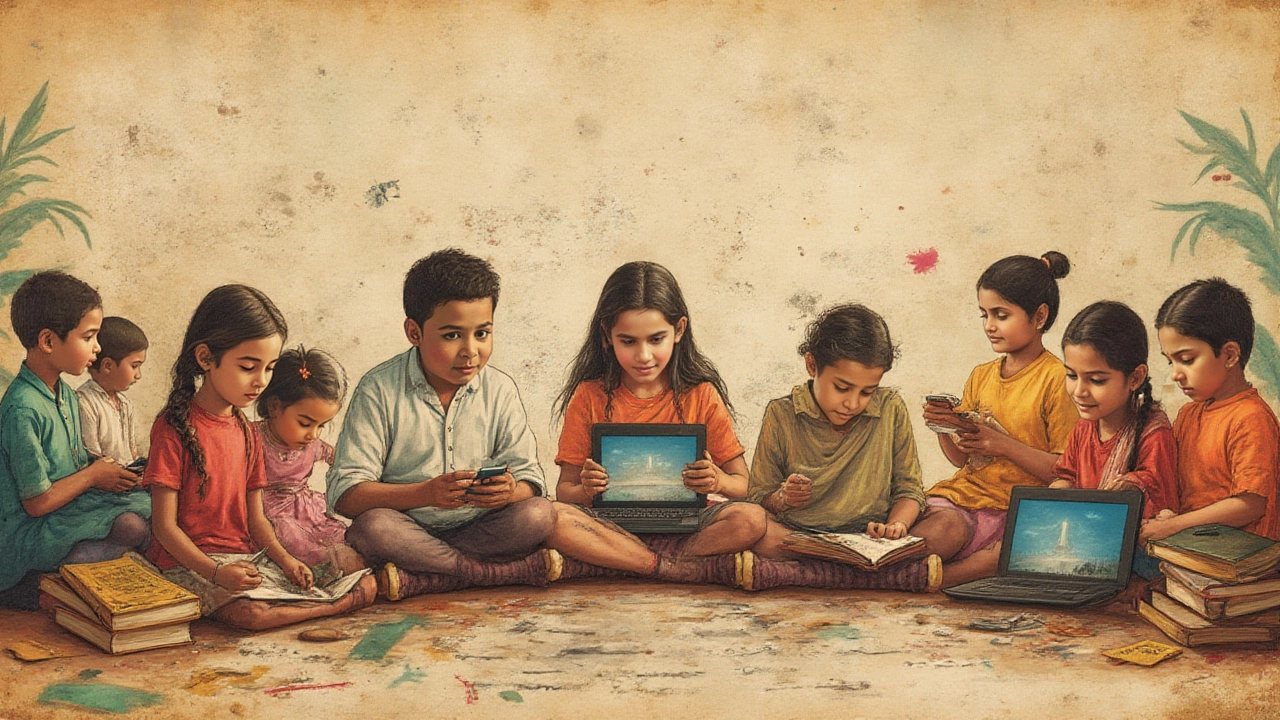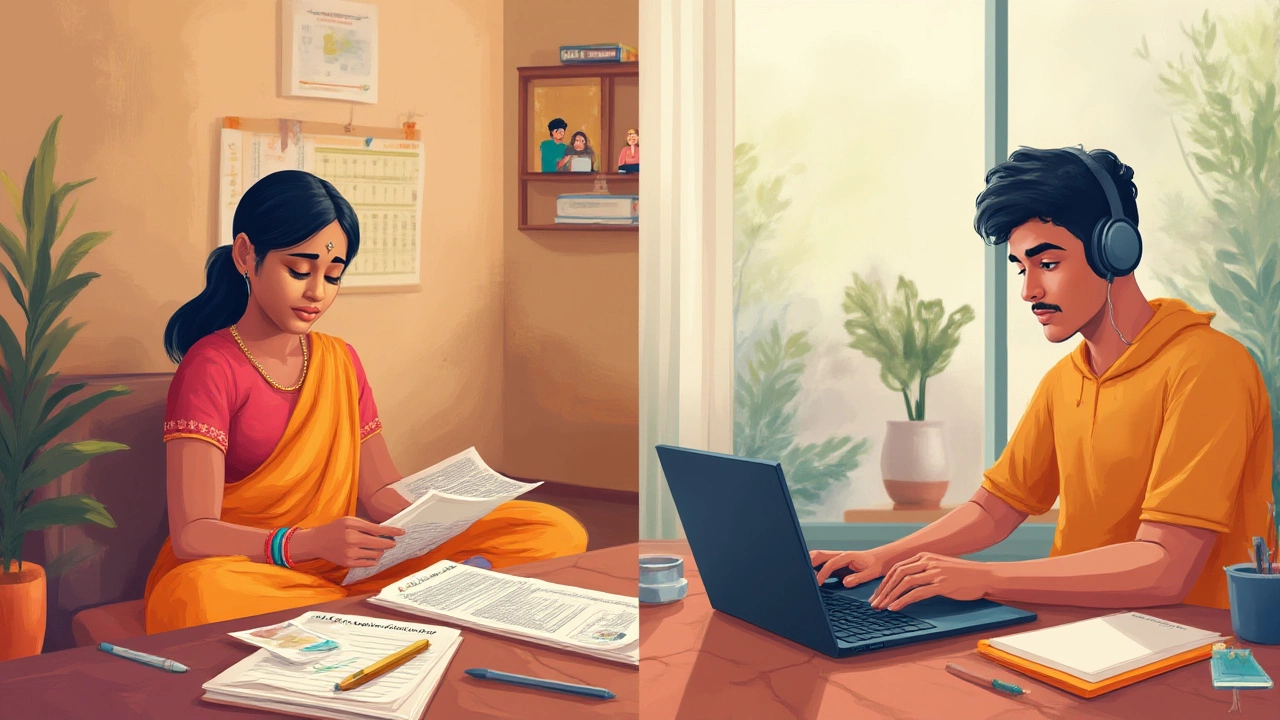So you’re staring at your options—distance learning and online learning—but everyone seems to use these terms like they mean the same thing. Spoiler: they’re not twins. Picture this: you’re researching your ideal program, maybe something flexible because you’re juggling a day job, a family, or you simply prefer studying in your pajamas. Suddenly, you realize some programs say “distance;” others say “online.” It’s time to clear the fog.
The History and Evolution of Distance and Online Learning
If you dig into the roots of distance education, you hit the 1840s in England. Isaac Pitman, a teacher, started mailing postcards of shorthand lessons to his students, who’d mail back their work for feedback. That shocked me too—we’re not talking about the dial-up Internet age or the Nokia 3210 era, but literal horse-and-buggy mail. Decades later, distance learning grew up. By the early 1900s, universities were shipping out entire books and assignments. Fast forward to the 1970s—televised courses. Funky, right? Imagine tuning into your physics class on TV, popcorn in hand!
Online learning wandered in much later. It really began taking shape in the late 1980s and absolutely exploded after 2000, right when most homes got connected to the Internet. Suddenly, we had learning management systems (LMS) like Blackboard and Moodle. Professors could add video lectures, quizzes, forums—you name it. No more snail mail delays, no cassette tapes, just log in and go.
Here’s a neat fact: According to the National Center for Education Statistics in the US, the number of college students taking at least one *online* course rose from 1.6 million in 2002 to 6.9 million by 2018. The pandemic just shifted this into overdrive. But not all distance learning is online. In 2019, some universities were still mailing DVDs or printed materials for learners with poor Internet connections. Today, these two areas overlap a lot, but their differences matter, especially if your access or learning style is specific.
| Aspect | Distance Learning | Online Learning |
|---|---|---|
| Delivery Method | Can include print, DVDs, mail, TV, or online | Fully digital via the Internet |
| Interaction | Sporadic, sometimes via mail or phone | Live chats, forums, video calls, emails |
| Pace | Often self-paced | Can be self-paced or scheduled |
| Required Tech | Minimal to moderate; internet not always essential | Consistent internet and digital device |
| Start Dates | Often flexible, rolling admissions | Usually fixed, sometimes rolling |
| Assessment | Mailed assignments, some in-person exams | Online quizzes, Remote proctoring, Digital submissions |

Breaking Down Distance Learning vs Online Learning: What Really Sets Them Apart?
Distance learning is the umbrella term. It simply means students and teachers are separated, whether by cities, countries, or even continents. What’s wild here is that distance learning doesn’t have to rely on the Internet. Think correspondence courses, where assignments are mailed back and forth—or radio lectures. Older generations might remember signing up for night school, picking up sticker-stamped packets from the post office, and mailing essays back. Distance education is all about physical or digital space between the learner and the instructor.
Online learning, though, is a flavor of distance learning. It’s always digital and Internet-based. So, if you’re streaming lectures, posting on a course forum, and submitting PDFs, you’re in the online learning lane. Here’s a hot tip: while every online learner is a distance learner, not every distance learner is online. Plenty of distance learners still use offline tools, especially in rural spots or places with patchy Wi-Fi.
Let’s make it concrete. Say Veda is in a small Himalayan village with sketchy broadband. Her university sends printed textbooks, she watches pre-loaded DVDs (delivered by post), and then mails back her handwritten assignments. That’s distance learning, but not online. Now take Isha from Mumbai, who joins live streamed classes, drops questions in a group chat, and submits her projects through Google Classroom. She’s doing online learning—distance-based, but everything runs over the web.
What about universities that mix both? Hybrids exist! Some courses start with mailed materials, then move to online discussions once all the students are up to speed. It’s all about what resources are available and what suits learners best.
Many universities and even governments keep refining their methods. Even now, the Indian government runs radio-based school education for places still catching up with web access. A lot of colleges in the US offer printed versions of online textbooks for students living in isolated rural areas.
But don’t think distance learning is old news. Take the Open University in the UK—around since 1969. It’s one of Europe’s biggest distance educators, and for decades, you could get your degree largely through TV broadcasts, phone calls, and snail mail. Now, they’re more online, but they have both tracks open, especially for those abroad. The same goes for Australia’s University of New England—they’ll still work with you via good old-fashioned post if needed.
If you’ve got reliable Internet, online learning brings huge perks—forums, instant feedback from teachers, app-based quizzes, and even virtual reality biology labs. But for anyone limited by tech or location, the more traditional distance methods are still thriving.

Which One Should You Choose? Tips to Succeed in Distance and Online Learning
If you’re weighing your options, first figure out your own constraints and goals. Are you living somewhere with solid Wi-Fi and a laptop? Online learning offers tons of engagement tools—think Zoom lectures, Slack channels with classmates, quick feedback, and peer-to-peer discussions. If you struggle with self-discipline, online platforms sometimes have fixed schedules and reminders that keep you on track.
But maybe you’re more old-school. You like the feel of physical books, or you don’t have steady web access. Distance learning courses by mail, phone, or radio could work better for you. Pro tip: distance courses often let you set the timeline—ideal if you work shifts or have unpredictable routines.
Want to boost your chances of success? Here’s what I recommend, no matter which style you pick:
- Own your schedule. Carve out learning time the same way you slot in appointments. Consistency pays off.
- Communicate. Don’t wait if you’re stuck—distance tutors expect emails, phone calls, or even mailed questions.
- Upgrade your gear if possible. Even basic smartphones can help access digital resources, photos of notes, or recorded lectures.
- Use all the available resources. Many universities offer digital libraries, virtual study groups, social media forums, and student support—even for mailed courses.
- Stay organized. Even traditional distance learners need folders, calendars, and checklists to juggle deadlines.
- Figure out your learning style. If you’re visual, ask for video or picture-based materials. Auditory? Request audio lessons or see if classes offer podcasts.
- For parents: set up a study nook for your kids, even if it’s part of the kitchen table. Kids thrive on routine and a physical spot for learning.
- Test the platform before signing up. Some programs give trial access to their learning portal or sample materials—use this to see if the fit feels right.
Here’s a stat for perspective: A 2023 UNESCO report called online learning "a massive leap for accessibility" but warned of a persistent digital divide—almost 3 billion people worldwide still don’t have reliable home Internet. That’s why classic distance education isn’t going anywhere soon.
Whichever format you pick, both can get you to the same goal: a recognized qualification, upgraded skills, and maybe a fatter paycheck. Just make sure you know what suits your situation. Distance learning in its pure, old-school form is all about flexibility, whatever your tech status. Online learning ramps up the interactivity and resources if you’ve got the digital muscle.
Bottom line—distance learning and online learning have different flavors and fit different lives. Pick your course, know your tech (or lack of it), and get started. You really can learn just about anything, from Mandarin to math, with the right format. Keep your eye on what works best, and you’ll find your groove.

